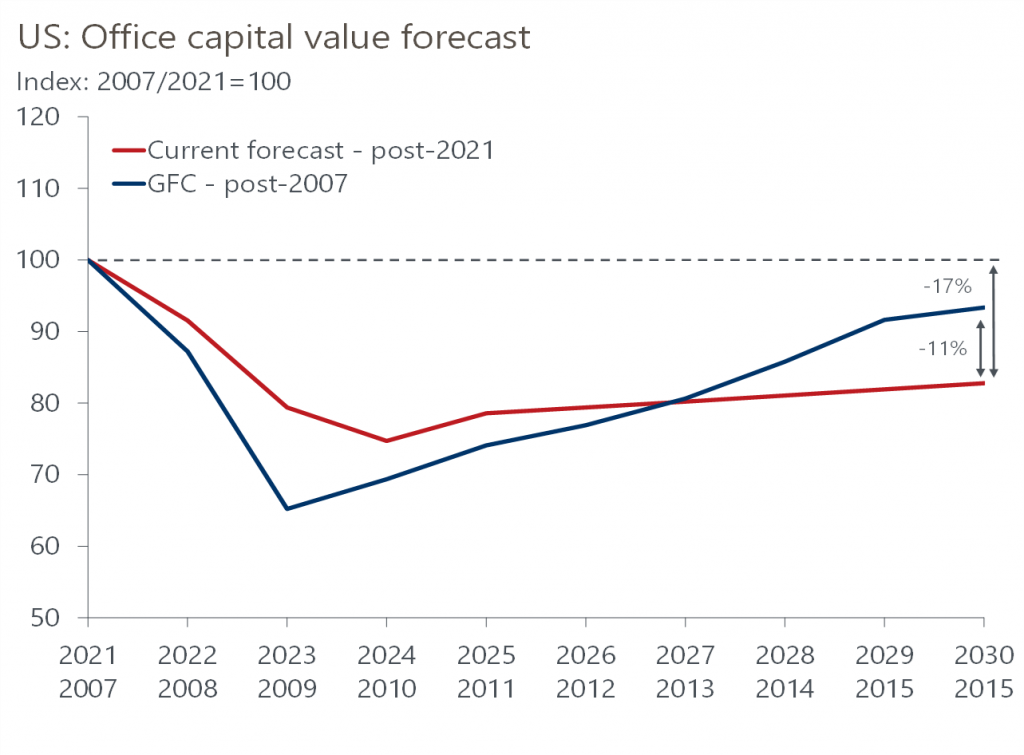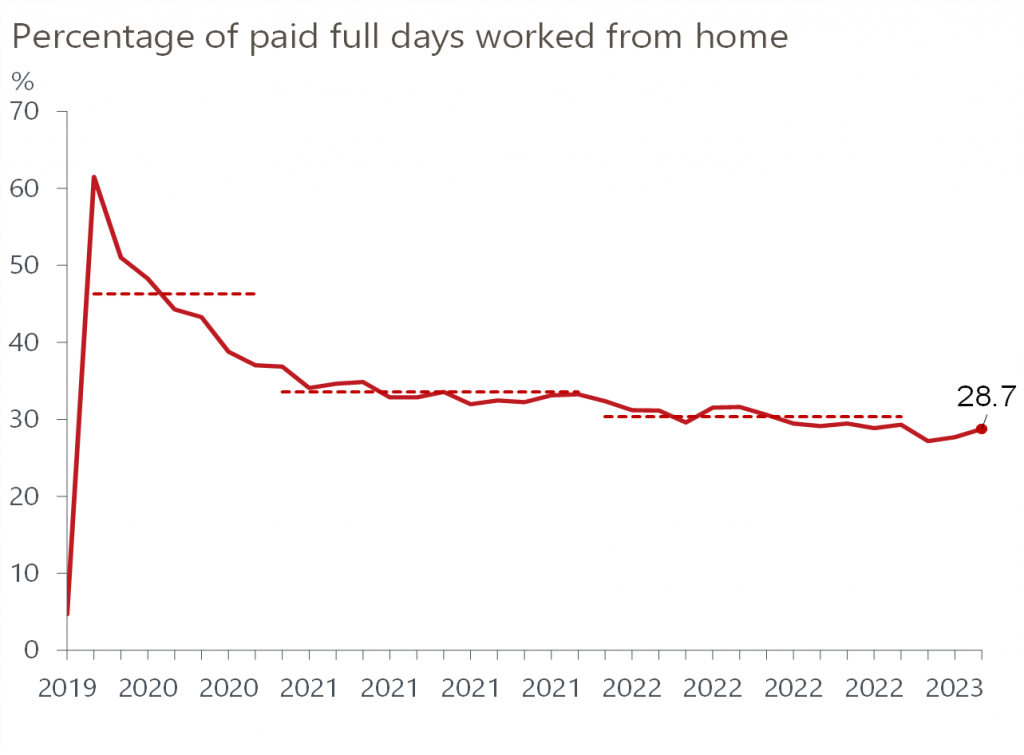US office capital value will be 17% below 2021 values by 2030.

Having just passed the three-year anniversary of the Covid lockdowns, it is a good moment to take stock of the impact of the pandemic on US office space. Overall, the shift to working from home following the Covid lockdowns has had a clear impact on real estate. For apartments, some renters are looking for more space to include a home office or workspace, while downtown retailers have been negatively affected by lower foot traffic. But it is the office sector in particular that has borne the brunt of the WFH impact.
Just as with retail after the global financial crisis, office markets and office properties will perform differently under headwinds from the WFH movement in the coming quarters. The near-term outlook for offices will be dominated by a looming recession at the end of this year and tightening lending standards. So, assessing office performance might help to understand how specific markets and assets will weather the impending economic uncertainty.
Focusing first on how the WFH shift has progressed since the onset of the pandemic, according to data from WFH Research and NBER, the percentage of paid full days worked from home has decelerated to 28.7% as of March 2023. This follows a spike in early 2020 of 61.5%. Interestingly, the latest figure, while below the 2022 average of 30.3%, has risen from 27.2% in January this year. On average, the rate has fallen each year since the start of the series in 2020 but has hovered close to 30% since the start of 2022. Tech (2.34 days per week), finance (2.19 days per week), and professional and business services (1.98 days per week) are the employment sectors with the highest prevalence when it comes to number of days employees work from home.

Breaking down the broad US trends, there is a divergence of WFH adoption among cities. Looking at cities by population size – the top 10, the next largest 11 through 50, and smaller cities – the percent of paid full days worked from home, like the broader US, has been trending down since 2020. According to the data from WFH Research and NBER, larger cities recorded the highest rate, at 33.4% as of March 2023, while the smallest cities recorded the lowest rate at 24.7%. Do these trends translate directly to office space fundamentals?

























